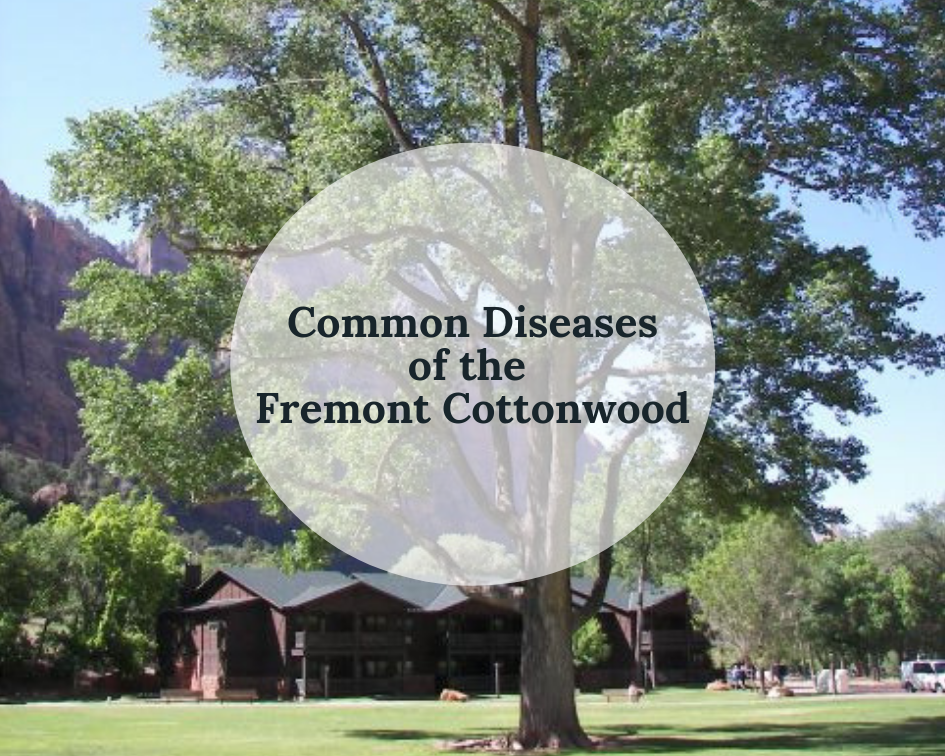This post may contain affiliate links. As an Amazon Associate we earn from qualifying purchases.
Some common Fremont cottonwood diseases are critical. Read on to learn more.
The Poplar genus is a diverse group of plants. In fact, scientists using DNA sequencing are finding that some of the more common poplar species, such as P. nigra, the black poplar, may even have hybrid origins.
This is merely a long-winded way of telling you not to believe everything you read on the Internet about poplar trees, as the author of a recent email lamented. It seems he was trying to figure out what the heck was going on with his Fremont cottonwood (Populus fremontii) and, like most of us do, hit the Internet for information.
What he found was a slew of hobbyists writing about diseases of this particular tree that the tree is, in fact, resistant to. If you are a budding gardening writer, a word of advice: be species-specific when describing diseases. Not ALL poplars get the same diseases and this misinformation does a real disservice to the reader.
So, let’s see if we can help this poor, confused fella out.
The Fremont cottonwood, first and foremost, loves water and, in the wild, you’ll find it thriving on river banks and alongside streams and other wetlands. In fact, Fremont cottonwoods have a short life span, typically succumbing to disease, if not provided a perennial water source. Let’s take a look at some Fremont cottonwood diseases.
Texas Root Rot
Don’t you find it interesting that a water lover like the Fremont cottonwood tree could succumb to root rot?
Sudden death of the Fremont cottonwood tree is typically attributed to Texas root rot, a disease caused by Phymatotrichopsis omnivora, a big name for a tiny, soil-borne fungal pathogen. The first noticeable symptom of the disease is wilting, or a rapid decline and by the time that happens, it is too late to save the tree.
The tree may actually die within a few days, with the leaves still attached. There is no way to test the soil for the pathogen’s presence and there is no way to prevent or cure the disease. Just a note: the symptoms of Texas root rot mimic cultural problems, such as a lack of water. Before yanking the tree out of the ground, call an arborist for a definitive diagnoses.
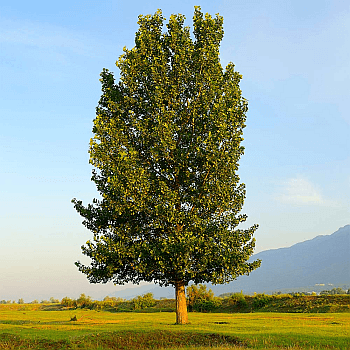
Learn more about the disease at the North Carolina State University’s website.
Cytospora Canker
If you notice orange stains on the Fremont cottonwood’s bark, or a heavy sap flow from it, suspect cytospora canker, another fungal disease, this time caused by Cytospora chrysosperma.
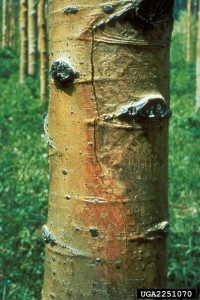
Although the pathogen infects many trees and shrubs, it seems to be attracted most to willow, poplar and maple trees. This infection is more likely to occur to a damaged cottonwood, such as would happen with improper pruning, running into it with the lawn mower, weed whackers and cat scratches.
Improper watering – either too much or too little — also predisposes the tree to this infection. Control cytospora canker by removing diseased branches as close to the trunk as possible. Use sharp equipment, such as a knife, to cut back diseased bark on the trunk until you hit healthy tissue.
In old wounds, remove pieces of bark on the wound and allow the resulting wound to air dry.
Ganoderma Root Rot
Fremont cottonwood trees that produce small leaves that turn yellow and wilt may be infected with another fungal pathogen, Ganoderma lucidum.
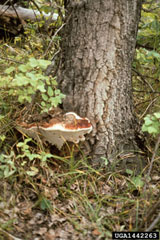
Check the lowertrunk of the cottonwood for clusters of shelf-like fruiting bodies, known as conks. Once the conks appear, the tree should be removed. As the disease progresses, the tree will become structurally unsound and may fall.
Prevent Ganoderma root rot by avoiding mechanical injury to the tree from lawn mowers and trimmers.
Inonotus Heart Rot
This is probably the most deadly disease of the Fremont cottonwood and it is caused by fungal pathogen found primarily in the southwestern U.S.
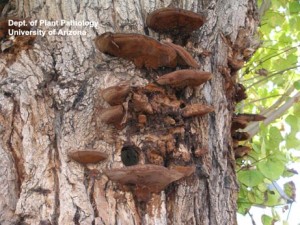
This pathogen produces shelf-like fruiting bodies, mainly higher up on the trunk. It causes branch dieback and a general weakening of the tree’s structure.
There is no cure for the disease and plant pathologists with the University of Arizona recommend removing the tree. Since the fungus can live even on dead wood, they further recommend that you burn the tree.
Avoid injuring the cottonwood to prevent this disease.
